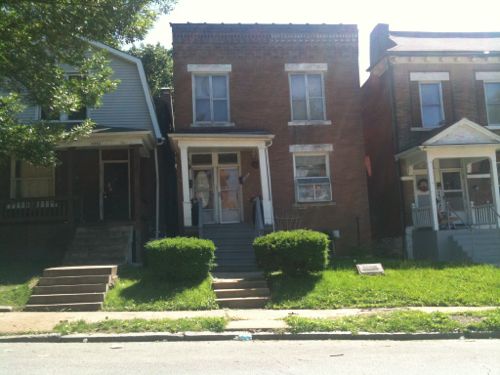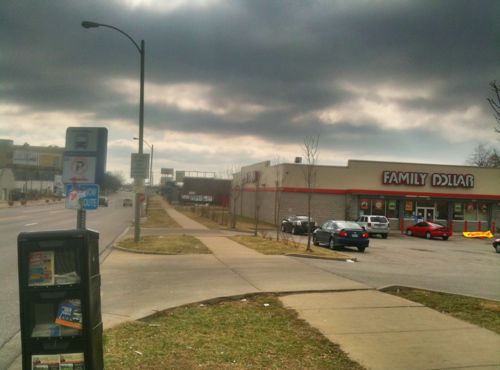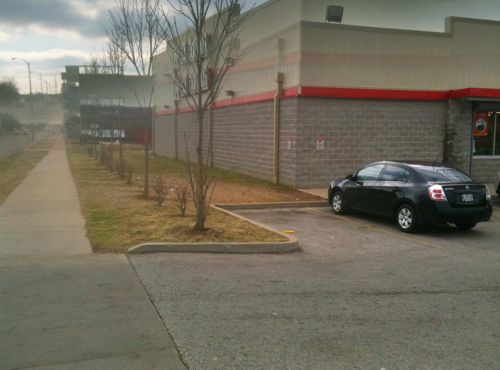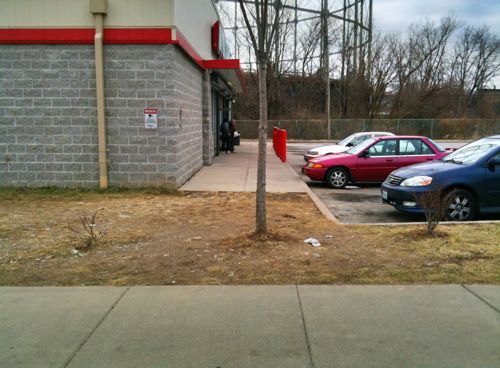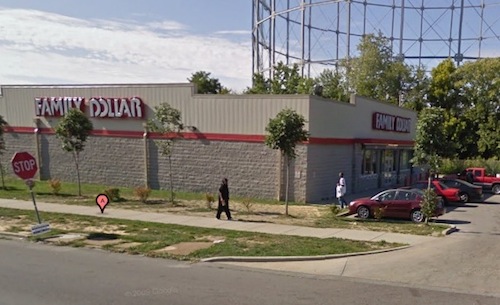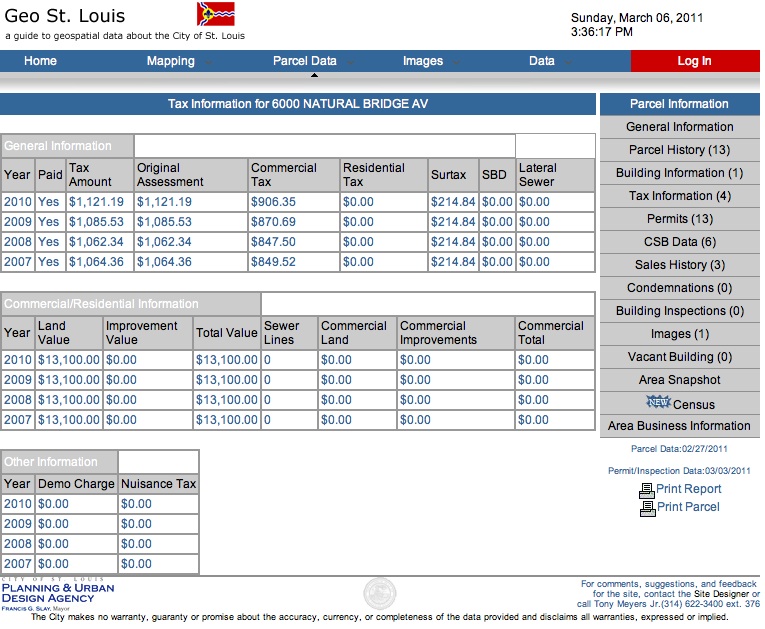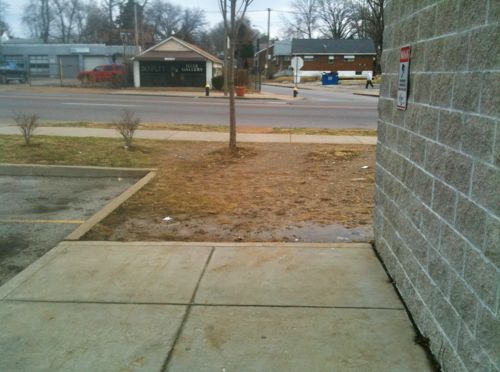Great Potential, Little Hope

The above storefront building at 2909-2917 Marcus Ave is owned by the city’s Land Reutilization Authority (LRA). Â The building is just west of the Shelley House I blogged about last Tuesday. Â If not for being in a local historic district, the city would have razed this structure years ago. The LRA came out of urban renewal when the idea of razing buildings so land could be reutilized was all the rage. Â Today the LRA is a dumping ground for unwanted property:
The Land Reutilization Authority (LRA) receives title to all tax delinquent properties not sold at the Sheriff’s sale. It also receives title to properties through donations. The SLDC Real Estate Department maintains, markets, and sells these properties and performs land assemblage for future development.
The LRA has received attention in recent years, the RFT quoted a state audit in 2009:
The LRA does not have contracts related to costs incurred for property maintenance and upkeep. During the year ended June 30, 2008, the LRA paid approximately $660,000 to the St. Louis Development Corporation for property upkeep services, and $100,000 to the city’s Forestry Division for grass cutting, weed maintenance, and debris removal. In addition, there is no documentation to support why only $100,000 was paid while the Forestry Division’s billing records indicate it incurred charges of $1,658,000 for LRA properties. LRA staff indicated the land sales do not generate sufficient revenues to pay for all related costs and the city’s General Fund incurs the majority of the additional costs.
More recent:
A new study by the Show-Me Institute trains a spotlight on the largest St. Louis landholder. This is not any one individual or developer, but the Land Reutilization Authority, a joint creation of the city of St. Louis and the state of Missouri, which was set up in 1971 for the purpose of putting abandoned, tax-delinquent properties back into productive use.
The problem is, the LRA seems to have done more to thwart development than to encourage it. During the past four decades, the LRA has accumulated a larger and larger inventory of vacant properties in St. Louis, while rejecting many offers from private individuals and small businesses to purchase selected properties from the agency. (St. Louis Beacon:Â LRA needs to sell a lot of lots)
When I started this post I was just going to comment on how I liked the feel of the area, the arrangement of streets and buildings. Â That changed when I discovered the city owns the building. Â Many have rightly complained about Paul McKee letting his properties deteriorate, but at least he has a plan.

The city has no plan for this area, other than let it continue to decline further. Â Then what?
The potential is all around, that “feel” I was talking about is great. Turning the area around takes leadership that appreciates the urban design of the period, rather than try to turn it into a late 20th century suburb. Given our lack of such leadership, with a few exceptions, I have little hope for this area. Of course I know our city can’t prosper if large areas are left to disappear.
– Steve Patterson



